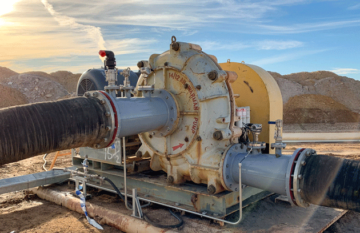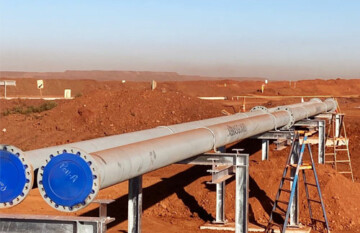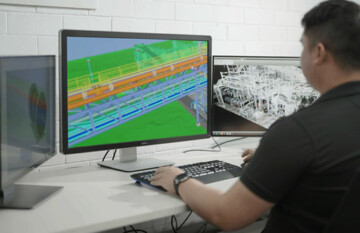The best time to minimise wear in a slurry pipeline is early in project planning. If you address wear in the design stage, you can iron out the kinks before they become a big problem down the track.
In our experience, there are three problem areas to address:
- Slurry pump piping
- Bends
- Pipe lining
In this article, we look at each of these and suggest ways to reduce wear. That way, you can be confident your pipeline will operate smoothly.
#1 Problem area: slurry pump piping
The slurry churning through the piping around slurry pumps is highly turbulent, making it one of the highest wear areas in a slurry piping system.
For example, iron ore tailings line often have a series of 4-6 pumps that connect through short sections of pipework. This creates high turbulence that leads to more piping wear.
To increase the longevity of pipework in this area, mining hose or polyurethane-lined pipe is a good option.
Mining hose is well suited to piping around slurry pumps. It’s easier to fit and remove for pump maintenance, and is custom built to match different end connections and internal diameters.
Reagents – such as those used in copper, lithium, gold, or zinc processing—corrode unlined steel piping. In these cases, lined piping – such as polyurethane – is better option. Polyurethane is resistant to corrosion and can also handle high-velocity particles, and turbulent wear around pumps.
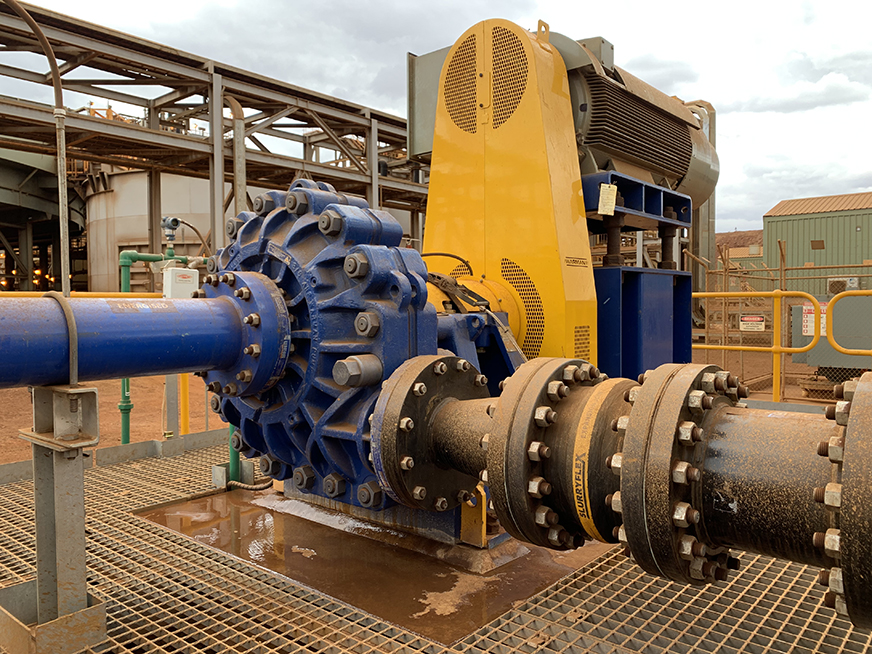
Slurry pump piping is one of the fastest wearing areas in a tailings pipeline
#2 Problem area: bends
Where there’s a bend in the pipeline – due to elevation change, re-direction, or branches – there’s often increased wear to the liner in the bend spool.
There are two ways to reduce this:
- Avoid placing a bend close to pump discharge, where there’s high velocity and turbulence.
- Opt for longer sweeping bends. Short radius bends cause slurry particles to hit the same ‘hot spot’, which creates localised wear. Longer radius bends provide a better flow path and reduce localised wear points.
On the recent Zulu 6 pipeline project at Roy Hill mine, the engineers did both. The spec originally called for pre-formed bends with 6mm standard polyurethane lined pipe.
Instead, they shortened the length of the upstream spool, and used a longer length of hose to create a sweeping bend. This removed a concentrated wear spot that would have caused recurring maintenance issues.
They also chose mining hose over the lined spool bend because it’s easier to fit during installation. The rubber carcass can bend into place if there’s any misalignment in connecting pipework.
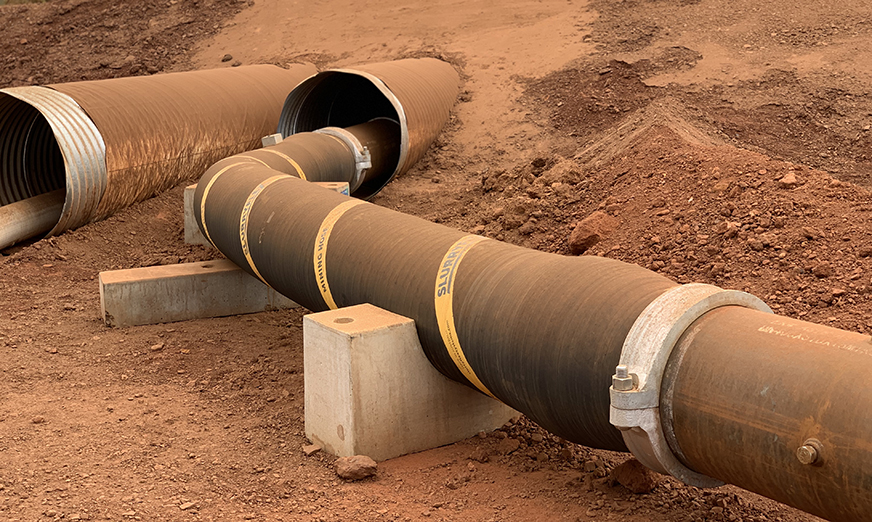
Mining hose is a good option for bends due to its tolerance during installation and wear resistance
#3 Problem area: wear liner
At the design stage, it’s standard practice for engineers to specify bare steel or HDPE because it’s low-cost and project budgets are tight. But over the life of the pipeline, it’s less efficient because bare steel and HDPE will wear quickly under abrasive slurry conditions and will have to be replaced.
Reagents and flocculants found in tailings slurry corrode bare steel, increasing the risk of leaks and failures in pipelines. While increasing the wall thickness of the steel compensates for a certain degree of wear and corrosion, a high-performance liner protects the steel and give you peace of mind that the pipeline will last for as long as you need it to.
One of our customers, an iron ore mine in the Pilbara, built a tailings line with unlined steel. After several years, the maintenance team found that a buried section of pipe had almost completely rusted through.
They decided to remove the unlined steel on that section of the pipeline and replace it with mining hose. Mining hose is resistant to corrosive elements, as well as abrasion and cutting. They haven’t had any problems with it since.
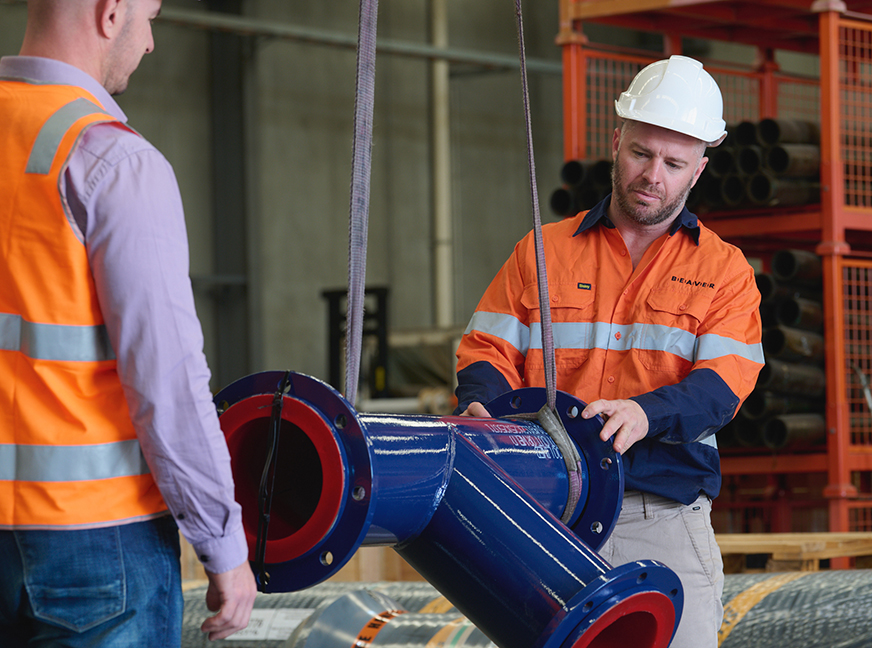
Consider lined pipe for corrosive and abrasive applications
Top tips for managing pipeline wear
There are so many variables at play when designing a pipeline. Reducing wear is just one of them.
For an efficient pipeline, consider mining hose or lined pipe near pumps, opt for more sweeping bends, and look at the different lined piping technology available.
These tips will help you avoid unnecessary and costly wear down the track—and give you peace of mind that the pipeline will last the life of the tailings dam, and probably the life of the mine.
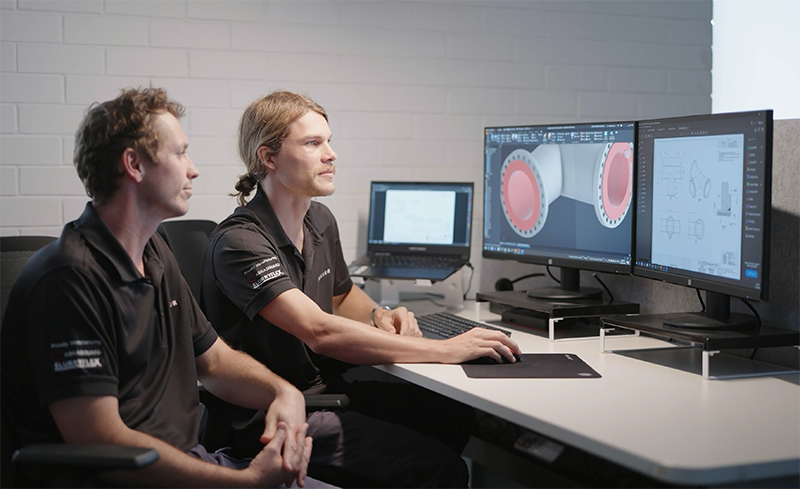
Get practical recommendations for your pipeline
Reach out to setup a call with a pipeline specialist. We'll give you clear recommendations and advice to help you with your piping specification, so you can confidently design a pipeline that lasts.
"*" indicates required fields









